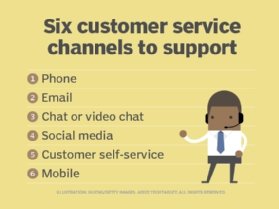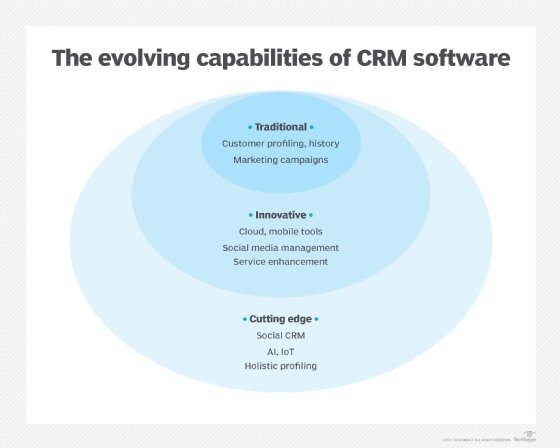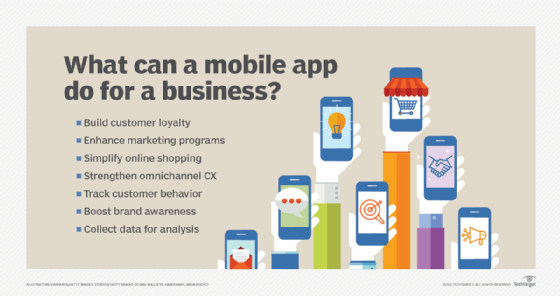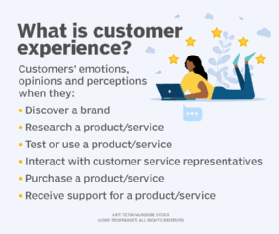omnichannel
What is omnichannel?
Omnichannel -- also spelled omni-channel -- is an approach to sales, marketing and customer support that seeks to provide customers with a seamless and unified brand experience, regardless of which channel they use. The organization's distribution, promotion and communication channels are well-integrated in the back end, so regardless of whether the customer is shopping online from a desktop or mobile device, by telephone or in a brick-and-mortar store, their experience will be seamless and consistent.

The terms omnichannel and multichannel are frequently used interchangeably. However, this is incorrect since there are some differences between the two approaches.
The term omnichannel is most frequently used in retail and e-commerce settings. A brand that focuses on omnichannel is able to provide consistent buying experiences across all the channels it operates on, including online, in-store, mobile, SMS and social media.
What is an example of omnichannel?
Most customers have a preferred channel when interacting with and purchasing from a brand. Many use more than one channel along their customer journey. For example, Customer A may research a product online, purchase it in-store, and sign up for email marketing to receive product updates or new offers.
This article is part of
What is digital transformation? Everything you need to know
Regardless of which channel Customer A prefers or uses, an omnichannel approach ensures that their purchase experience is always consistent and frictionless. This may mean providing them with the same products and pricing across all channels so they always know what to expect from that brand. Or it may mean that the customer support team has key data about Customer A, which they use to communicate with them. The data also allows the team to seamlessly switch between channels so the conversation can continue per the customer's preference and with minimal interruptions during the changeover.

How does omnichannel work in practice?
Suppose Customer A purchases Product X in Brand Z's physical store. They are a returning customer and all information about their previous purchases is available in the brand's customer relationship management (CRM) tool.
A salesperson interacting with the customer in the store references this information to make cross-sell or upsell recommendations and increase the customer's average order value (AOV). Similarly, if Customer A calls the company's contact center to complain about the purchase, a customer service representative can access the customer's information and help them resolve the problem in a personalized way on the customer's preferred channel, whether it is phone, email, webchat or something else.
Omnichannel will also enable Customer A to check inventory by store on the company's website. To do this, they may use a desktop, a laptop or the brand's mobile app. They may also buy the item they need and then pick it up in person from the physical store (or one of the company's stores at a location of their choosing).

What are the benefits of omnichannel?
An omnichannel approach makes multiple communication and purchase options available to customers. When a customer can shop using their preferred channel, they are more likely to support that brand and make repeat purchases. Omnichannel also improves customer experiences, which also increases the likelihood that customers will come back and remain loyal to the brand.
The approach is also proven to improve customer service. The back-end integration of channels allows customers to choose their preferred channel to communicate with customer service representatives and also to switch between channels in the course of a single interaction. Reps have all the data they need about the customer's purchase history, which they can use to personalize each interaction. Moreover, customers don't have to repeat their information or request, which minimizes their frustration and allows for faster resolutions and lower turnaround times (TAT).

Some other benefits of omnichannel include the following:
- creates a complete picture of customers, who they are and what they want, so brands can better understand them and accordingly tailor their offerings and communications;
- simplifies the purchase process for customers, thus increasing sales, order value and revenues;
- offers a consistent experience across every channel, making a positive impact on customers and garnering their loyalty;
- helps to consolidate inventory and multiple sales channels, saving money for the brand;
- expands a brand's reach; and
- improves customer satisfaction, which can reduce customer churn and increase customer lifetime value (CLV).
Important elements of omnichannel strategies
Businesses can implement omnichannel strategies in many different ways, depending on their goals and their customers' needs. But there are three common elements in every omnichannel strategy: data, technology and people.
Every organization needs information about its customers, such as who they are, what they need, how they behave and what they have purchased in the past. Technology is required to support multiple channels, collect and track customer data across all these channels and make it available for specific omnichannel tactics (e.g., tactics related to customer support).
Human resources are also needed to plan and execute omnichannel plans. Data and technology are useless without an omnichannel team to leverage these aspects, design an omnichannel strategy, coordinate efforts across channels and ensure that the strategy is working and able to achieve its objectives.
The team will also update the strategy to account for changing customer needs and behaviors and make adjustments as necessary. Some teams also implement appropriate omnichannel performance metrics to assess omnichannel performance and its effect on customer experiences, omnichannel sales and brand profitability. These metrics may include the following:
- profit per transaction
- sales per employee
- orders processed per person, per day
- customer profitability
- customer lifetime value
- repurchase rate
- customer satisfaction (CSAT)
What is the difference between omnichannel vs. multichannel?
The prefix omni is from the Latin omnis which means all or every. In contrast, multi in multichannel means many. Though omnichannel suggests covering more channels, this is not necessarily true. Also, the omnichannel vs. multichannel distinction goes beyond numbers.
All omnichannel models use multiple channels, but not all multichannel experiences are necessarily omnichannel. A multichannel approach means that a company uses multiple channels to sell to and communicate with customers. However, there is no coordination between these channels, with each channel operating independently from the others. As a result, customers don't get seamless experiences when engaging with the brand before, during or after a purchase.
The omnichannel model is also based on using multiple methods to sell products and engage with customers, such as physical stores, websites and mobile apps. It also allows customers to communicate with the brand via multiple channels and touchpoints, such as phone, email, webchat, SMS and social media. But unlike multichannel, omnichannel allows these channels to coordinate with each other and share data, enabling brands and customers to conduct business with each other in a seamless, uninterrupted manner. In addition, such coordination ensures a consistent experience for customers, regardless of which channel they prefer and how they want to interact with the brand.
For example, if a customer who has started an interaction with a company on webchat submits information, such as an account number and then decides to end the chat and call customer service instead, their information can be transferred to an agent. A company with strictly multichannel capabilities can accommodate the customer on both channels, but because there is no integration or data sharing between the back-end systems, the customer would have to reenter their information using an automated system, such as interactive voice response (IVR), or relay it to a live agent. So, while customers can switch between channels, the switching itself get cumbersome, affecting their overall experience with the brand.
Omnichannel marketing and omnichannel marketing platforms
Omnichannel marketing is a way for brands to promote their products or services across multiple channels and devices using unified messaging, visuals and offers. The goal is to connect with customers on their preferred channel with relevant content and a consistent brand message. Omnichannel marketing also enables brands to reach their target audience in the right way and at the right time, thus increasing the probability of conversions and higher sales.
Omnichannel marketing platforms enable businesses to seamlessly operate their marketing campaigns across multiple channels and devices. Three of the most popular platforms are the following:
- HubSpot CRM. This marketing automation tool enables brands to manage the processes of attracting and converting prospects, qualifying leads, building websites and more.
- Shopify. It enables companies to design personalized customer experiences, optimize their sales funnel and measure the impact of their marketing campaigns.
- ActiveCampaign. This platform provides automation, marketing and CRM tools to build and deliver on-brand omnichannel customer experiences.
See how omnichannel vs. multichannel marketing differ, learn 7 benefits of customer experience management, check out 10 customer service best practices to follow and explore top four supply chain strategies to create the omnichannel experience.





